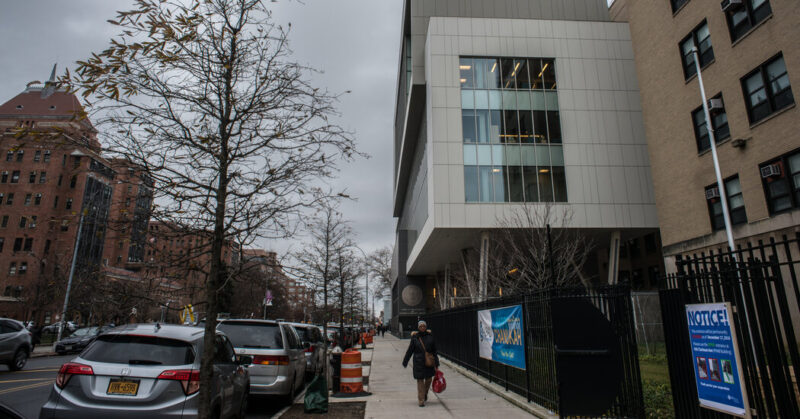SUNY’s University Hospital at Downstate Is Planning to Close

The state is planning to drastically shrink or even close University Hospital at Downstate in Brooklyn, the only state-run medical hospital in New York City.
A number of concerns — too few patients, annual operating deficits of about $100 million and a deteriorating hospital building — have led to the proposal, which hospital administrators shared with doctors this week.
It is unclear how the plan will affect access to medical care for residents of central Brooklyn and beyond. The hospital, in East Flatbush, is directly across the street from another public hospital, the city-run Kings County Hospital, so the change would not mean a swath of the city suddenly lost access to a nearby hospital.
But Downstate has some specialized care that Kings County doesn’t provide. It has the only kidney transplant program in the borough, for example, and hospital administrators expressed uncertainty about the program’s future.
The hospital is part of SUNY Downstate Health Sciences University, a major medical school and research institution. In an interview on Friday, SUNY’s chancellor, John B. King Jr., said the plan was to transfer the inpatient care at Downstate to other Brooklyn hospitals. For instance, he hoped to move much of the inpatient services across the street to a wing at Kings County Hospital.
The plan would, in effect, create “a SUNY Downstate wing at Kings County” with perhaps 150 beds, Chancellor King said.
Closing inpatient services would free up funding and lead to new funding from the state that Downstate intended to use to build a new urgent care center and an ambulatory surgery center, and to increase primary care, Chancellor King said. The funding would also be used for a student center and an institute that studied health disparities.
He said the proposed changes would “strengthen” Downstate overall. Asked whether the plan would lead to less health care in East Flatbush and other neighborhoods, he said it would lead to just the opposite.
“This will lead to increased care,” he said, adding that the inpatient services would be preserved at other hospitals and that urgent care and other services would come. “This isn’t a cut,” he said.
But the union representing many health care workers at SUNY Downstate said that shipping out services to other hospitals would lead to a diminished institution.
“Let’s call this what it is: SUNY is closing Downstate,” the president of United University Professions, Frederick E. Kowal, said in a statement. He said that the plan “will undoubtedly harm the health of the central Brooklyn community.”
It is the second New York City hospital in recent months to announce it might close or dramatically downsize. Late last year, Mount Sinai Health System sought state approval to close Mount Sinai Beth Israel, a major hospital on Manhattan’s East Side that primarily treats lower-income patients.
University Hospital also treats many low-income patients. On a typical day, the hospital has about 144 admitted patients, though it has beds for more than twice that many. That’s not especially unusual in Brooklyn: Some hospitals have even lower rates of occupancy.
New York City saw waves of hospital consolidation and closures a decade or two ago, which were partly driven by high vacancy rates at some hospitals. Medical advances meant ever more procedures were performed on an outpatient basis or in ambulatory surgical centers.
But the coronavirus pandemic has demonstrated the need for hospital beds in times of emergency: In the deadly first wave of 2020, many New York hospitals were overwhelmed by more sick patients than they could adequately care for.
Plans to close hospitals typically lead to community fights, with unions and community groups rallying to keep them open.
Many details of the proposed transformation remain to be worked out, including what might happen to its main hospital building.
“We want to gather input from the community in the coming weeks,” Chancellor King said. He added that it was possible the site of the hospital building would be used to build housing.








